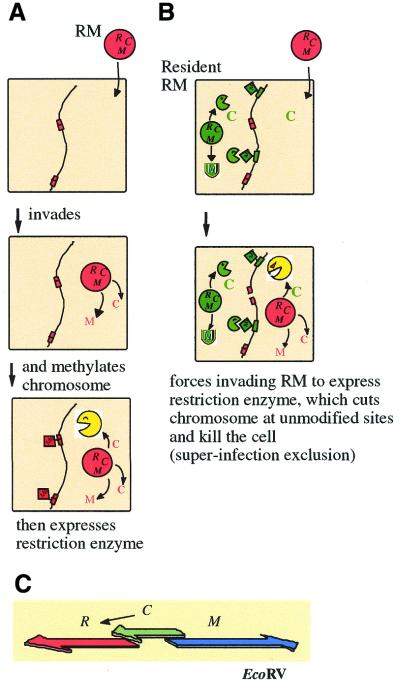Figure 5.
Establishment of an RM system in a host cell and super-infection exclusion. (A) Establishment of an RM system in a host cell. An RM gene complex invades a cell. Its methylase and regulatory (C) genes are expressed first. After the modification enzyme has modified most of the chromosomal recognition sites, the accumulation of C protein induces the expression of the restriction enzyme. (B) Super-infection exclusion. A plasmid carrying an RM gene complex invades a cell that harbors another RM gene complex with a different sequence specificity but with the same C protein specificity. The resident C protein induces the expression of the incoming R gene, whose product then cleaves the unmodified chromosomal sites recognized by the incoming restriction enyzme and kills the cell. The resident RM gene complex thus promotes its survival in the clonal population over that of other RM systems (compared with Fig. 1B.) (C) The gene regulation circuit underlying the delay of restriction and super-infection exclusion. In some RM gene complexes, such as EcoRV, its C regulatory protein regulates the expression of its restriction enzyme.

